The Science of Melting Cheese: How to Make the Best Nacho Sauce
Who doesn’t love a tray of loaded nachos? Well-suited for a snack, full meal, or party-time spread, this no-silverware-required dish is a favorite for its lava-like, smooth-as-silk cheese sauce. (And for the delicious meats you put on them, like brisket.) But we all know what it’s like when we try to make nachos from scratch: as cheese is heated it often turns into a curdled mess with pools of grease. How can a full-flavor, liquid cheese sauce be made at home? The secret lies in the melting properties of cheese, including the temperature of its melting point. Bring it on, cheddar!
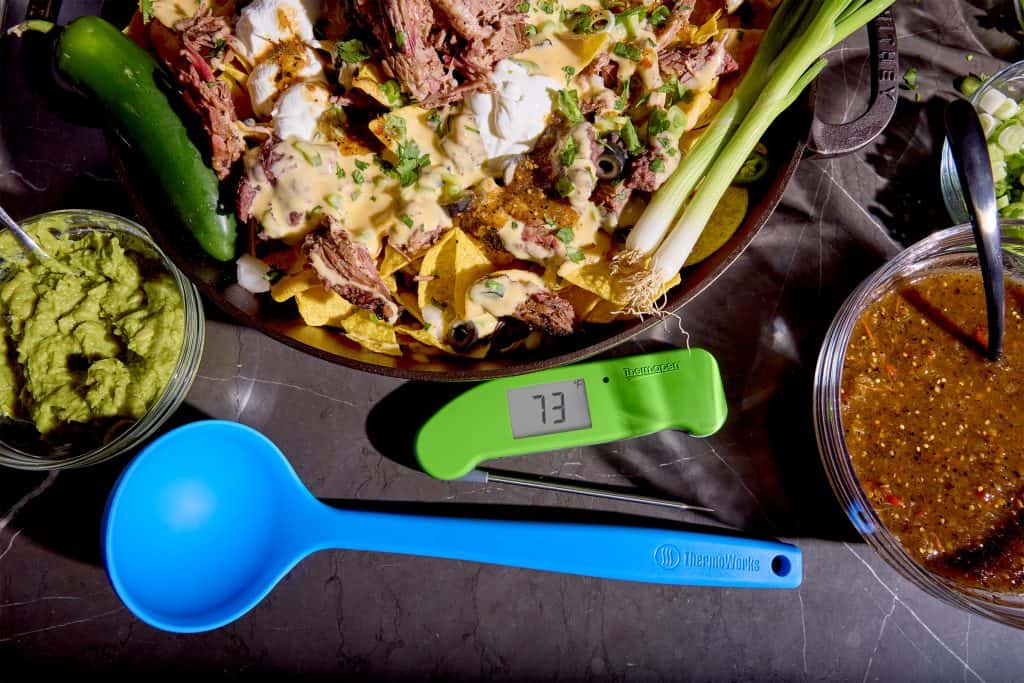
Basics of melting cheese
The basic building blocks of cheese are milk protein (casein), water, fat, and salt. When heated, the protein molecules break apart from that structure, freeing the other parts to become fluid. Melting— strictly defined as a phase change from a solid to a liquid—isn’t really happening, since the cheese becomes fluid by bringing some parts together and excluding others. If we want perfectly melted cheese, we have to take this structure into consideration.
Apply Some Heat: At about 90°F (32°C) the fat in cheese begins to soften and melt. Increase the temperature by about 40-60 degrees, and that’s when the activity starts with the protein. The molecules begin to break apart and disperse throughout the fat and water. In order for the cheese to stay beautifully stringy and melty, the protein needs to stay evenly dispersed with the rest of the moisture and fat (an emulsion).
But Not Too Much Heat: The thing is, once cheese is heated too far beyond its melting point, the proteins firm up and squeeze out moisture—the same way protein does in meat. When this occurs you’re left with rubbery, clumpy bits of cheese protein that separate from the fat and moisture. Case in point: the greasy slick on the top of pizza, and the puddles of grease on your nachos. The melting point of cheddar cheese is about 150°F (66°C). In the article “The Rules of Melting Cheese”, Fine Cooking points out the importance of melting the cheese slowly and gently to yield the gooiest results. When exposed to high heat, especially for extended periods of time, the proteins seize up and become firm—squeezing out moisture, then separating. To help keep your cheese stringy, shred it (to expose more surface area so the cheese will melt more quickly), bring it up to room temperature before heating (so it doesn’t require as much heat energy to melt), and use low, gentle heat.
Good Melters vs Bad: The most meltable cheeses are ones that are young and high in moisture. The longer a cheese is aged, the more of its moisture is lost, and the more rigid the proteins become—they resist breaking apart and becoming fluid. Think about shredded parmesan and how it reacts when heated alongside mozzarella in a lasagna. The mozzarella melts beautifully and is stringy when a slice is served; but the parmesan holds its shape. The protein in the older, drier cheese becomes a bit stubborn and will never be a melter like mozzarella. Examples of good melters are: non-aged cheddar, Colby, young Swiss, Monterey jack, and mozzarella.
How to Melt Cheese for Maximum Sauciness
Make it Saucy: How does all of this translate to a sauce? We need to create a fluid, pourable sauce without separating the cheese. Moisture is going to have to be added—but adding milk to cheese alone isn’t going to do it. We need something to hold everything together in a smooth emulsion, and we found a few different methods that work well.

Cheese Sauce Method 1: Cornstarch
Kenji with Serious Eats has a recipe for nacho cheese sauce that we used for our Chili Cheese Fries post. You can read more of a deep dive on the method there, but here’s the gist of it: Use evaporated milk and cornstarch to bind the protein, fat, and additional moisture into emulsified, pourable sauce. The starch molecules swell up, thickening the sauce, while the evaporated milk adds a concentrated source of milk proteins at a higher ratio than regular milk, giving the sauce more internal, flowy structure. This helps the entire mixture stay smooth and emulsified, resulting in a creamy sauce.
The resulting sauce from his recipe is beautifully pourable and delicious. When it cools and sets up it’s a bit firm, but can be reheated. Additional milk can be added to any leftover sauce when reheated to return it to a smooth, liquid consistency.
Cheese Sauce, Method 2: Sodium Citrate
Melting Salts
Ready to level up your cheese sauce game? We’ve found that the secret to perfectly velvety-smooth nacho cheese sauce is a combination of keeping the cheese at low temperature while cooking, and the use of sodium citrate (derived from citric acid)—one of a class of chemicals that food scientists refer to as “melting salts”. You may see this ingredient in the list of ingredients on a jar of commercial cheese sauce. This is what’s scientifically going on behind the scenes:
“Salts such as sodium citrate and sodium hexametaphosphate are known in the cheese industry as melting salts. Their primary purpose is to swap sodium ions for calcium ions bound to the casein proteins in cheese. In doing so, they loosen these proteins and make them water-soluble.
In combination with heating and stirring, these melting salts improve the emulsifying ability of the proteins in the cheese. They also tend to shift the pH of the cheese upward, which improves the texture and stability of molten cheese.”
–ChefSteps
(And, listen, we know that the use of a “chemical” in food is immediately off-putting to some people. But all foods are chemicals; salt is a chemical, sugar is a chemical. Sodium citrate is the result of the reaction between citric acid and sodium bicarbonate. So you could make it by mixing lemon juice with baking soda. This is not some industrial scheme, it’s just a natural food chemical that we don’t use very often. You can buy it by the bagful online and make cheese sauce for years on a couple dollars’ worth.)
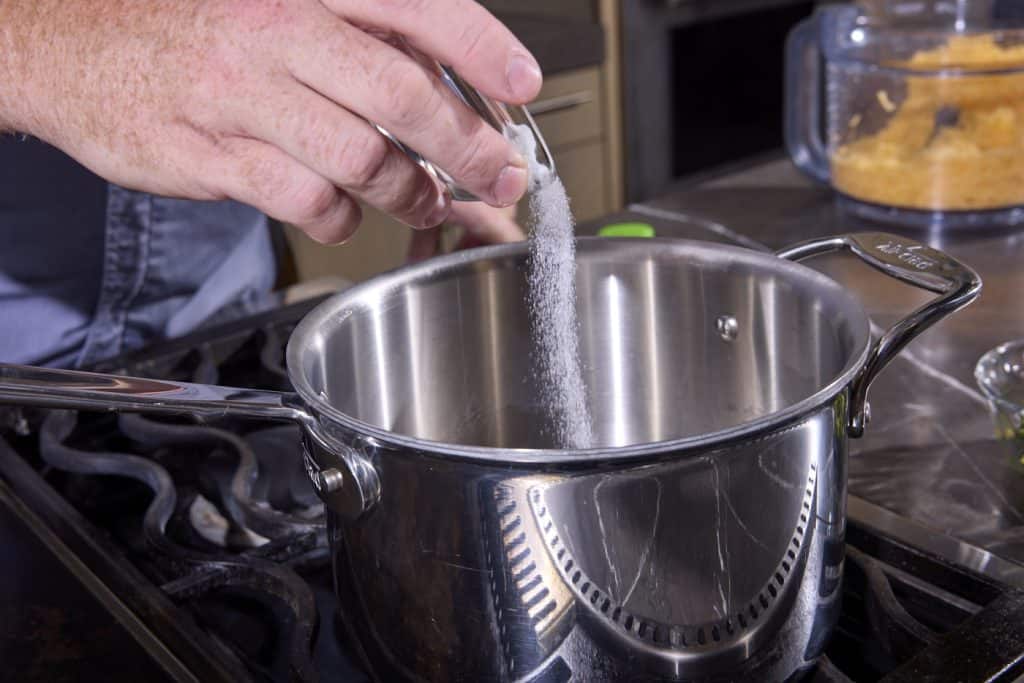
We used a recipe for Queso Dip from Modernist Cuisine, which uses only sodium citrate in a stovetop method. It produces some of the finest cheese sauces we’ve ever made. Scratch that. The finest cheese sauces we’ve ever made.
Aware that low heat is best for melting cheese, we carefully kept the temperature around 165-170°F (74-77°C) on the stove, monitoring the sauce with our Thermapen ONE throughout the cook. We dissolved the sodium citrate in the water in a saucepan, then added the shredded cheese and whisked constantly over medium heat until melted and smooth, while keeping the temperature no higher than 170°F (77°C).
We took a stick blender to the cheese, also, to ensure absolute smoothness. The result was incredibly smooth with full cheese flavor—more intense and cheese-like than with the cornstarch-based sauce. And the melting salt allows the cheese to be heated well beyond its melting point without losing the sauce’s emulsion. Translation: the sauce reheats very well.
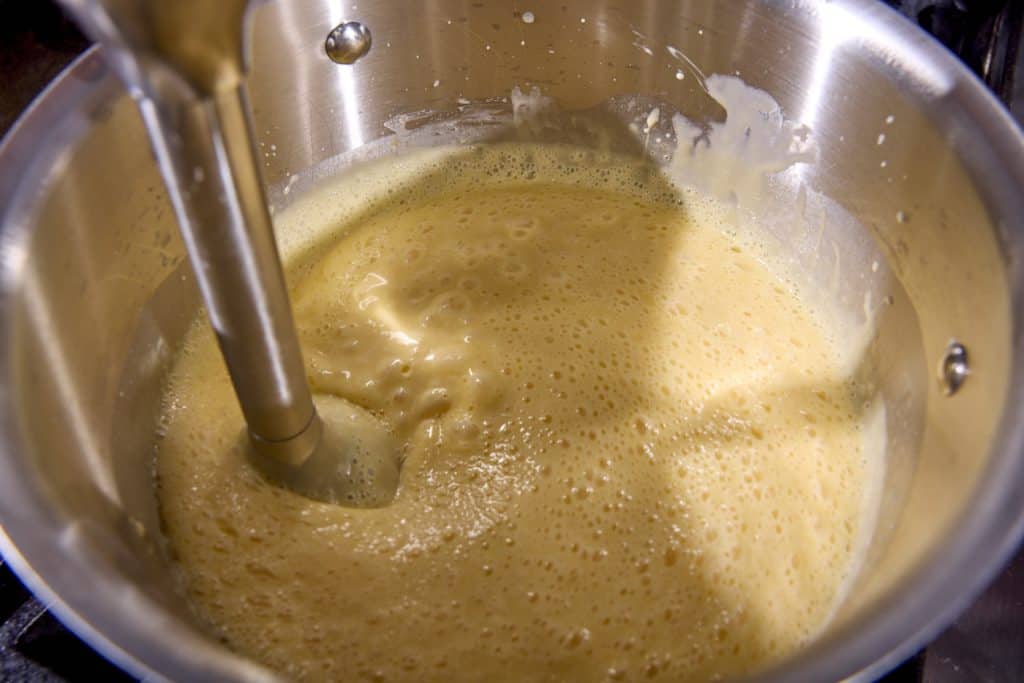
We like that nearly any liquid can be used to create the sauce with the melting salt. Our queso dip was made with only water and was fantastic. You can also use beer, chicken stock, or some kind of juice.
And even cheeses that are not quite as good at melting can be coaxed into an ultra-smooth sauce with this method. We made a version with Gruyere for another purpose and all it needed was a little bit more citrate to make it smooth out.
So, for the ultimate nachos (or mac and cheese), make your own sauce! You can jazz it up however you want, blending your cheeses and adding spices however you feel. Just remember to keep an instant-read thermometer like Thermapen ONE handy. Happy cooking!
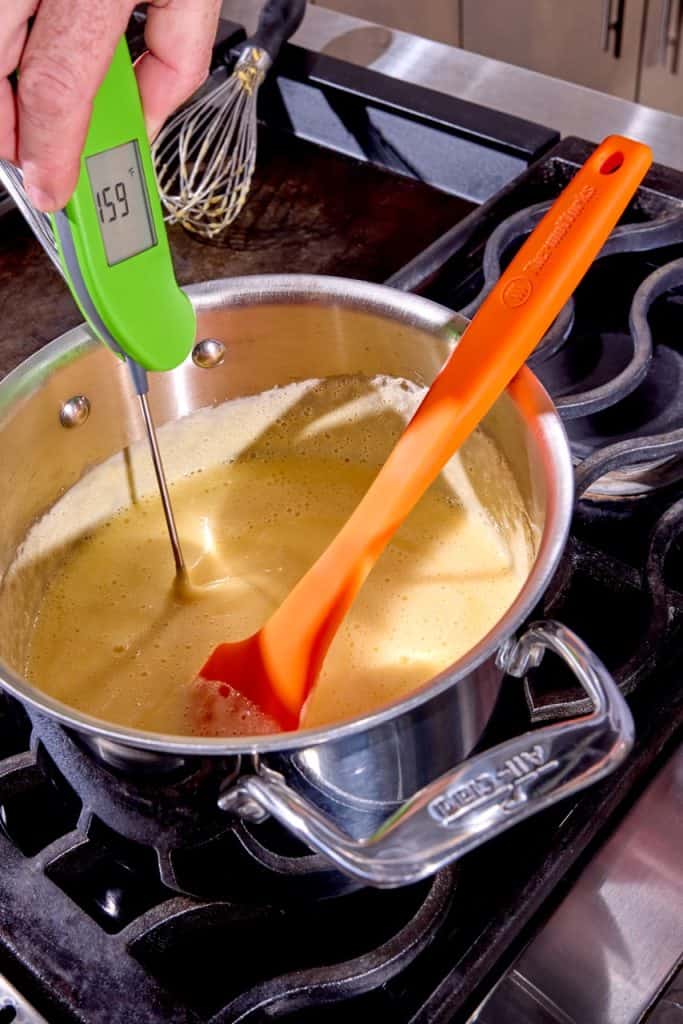

Homemade nacho sauce or other cheese sauce (queso dip, etc)
Description
Ultra-smooth cheeese sauces, for nachos, queso, or even mac and cheese.
Ingredients
- 454 g cheese, such as cheddar, grated (grate it yourself, don’t use pre-shredded cheese)
- 422 ml (g) water
- 18 g sodium citrate
- 1 Tbsp hot sauce
- 1/4 tsp ground cumin
Instructions
- Add the citrate to the water in a saucepan and heat.
- When the water reaches about 120°F (49°C) (use your Thermapen ONE), start adding the cheese by small handfuls, whisking to incorporate between additions.
- Continue monitoring, keeping the temperature below 170°F (77°C)
- When all the cheese has been added, add the hot sauce and cumin, then use an immersion blender, off the heat, to perfect the smoothness of the sauce.
- Serve it on some brisket nachos!
Resources:
- Serious Eats, Can’t Find Velveeta? Make Your Own Cheese Sauce!, and 15-Minute Ooey Gooey Stovetop Mac and Cheese
- ChefSteps, Cheddar Cheese Sauce
- Fine Cooking, The Science of Melting Cheese, and The Rules of Melting Cheese
- Modern Ktchn, High Tech Melty Cheese
- Modernist Cuisine, Melty Queso Dip


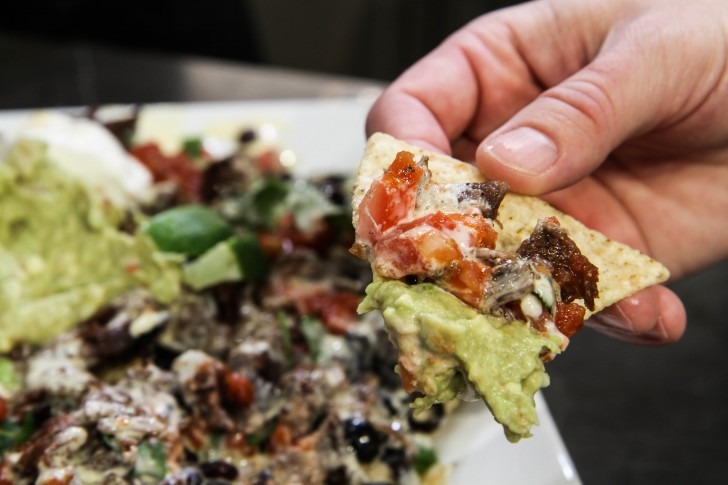
So I tried making this creamy nacho cheese with sodium citrate, tried it with water and milk and it comes out extremely salty. Can you tell me how to melt the cheddar or American cheddar with out it being salty?
Try the recipe for melty nacho cheese in this post. It uses no special chemicals but depends on extra protein and some starch.